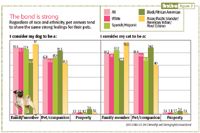The changing face of clients
Pet owner diversity calls for creative client service.
Sometimes it's hard to explain a complex medical diagnosis when you and the client speak the same language. Can you imagine doing this when you don't? While white households are still most likely to own pets, a large percentage of Hispanic, Asian, and black households also own pets (see Figure 1).

Who owns pets
"Probably about three or four years ago, we saw areas where being bilingual was absolutely mandatory," says Sheila Grosdidier, BS, RVT, a Firstline Editorial Advisory Board member and a partner with VMC Inc. in Evergreen, Colo. "Twenty-five to 30 percent of the client base needed bilingual receptionists, technicians, assistants, and doctors."

Diverse pet households
Grosdidier says she's seen this trend across the United States, from states like Arizona, Texas, Louisiana, and California to practices in more rural areas like Iowa. Bilingual team members have been a boon in many of the practices she's worked with, and she recommends creating an employee referral program. "These employees not only bring in people to work at your practice, they bring in clients," Grosdidier says. "And these clients recommend others."

Strong bonds
